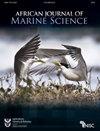以南非阿尔戈阿湾生态系统模型支持海洋空间规划
IF 1.4
4区 生物学
Q3 MARINE & FRESHWATER BIOLOGY
引用次数: 0
摘要
Ecopath with Ecosim (EwE)建模框架用于开发Algoa湾模型,并测试实施阿多大象国家公园海洋保护区(MPA)对生态系统的影响。Ecopath模型包括从浮游植物到顶级捕食者的37个功能基团,并使用Ecosim分别拟合了2010年至2019年(校准期)的12个和14个生物量和登陆时间序列。通过减少30%和100%的捕捞量,研究了两种不同程度的海洋保护区渔业关闭情景。时间模拟一直持续到2059年。拟合过程确定了最优拟合模型,即包括捕捞效应、六种最敏感的捕食者-猎物相互作用和环境强迫(小型浮游植物的初级生产异常)。总体而言,预测的生物量和捕获量时间序列较好地再现了2010-2019年的观测时间序列,其中沙丁鱼、圆鲱鱼、白头鱼和非洲企鹅的生物量与数据最吻合。在模拟结束时,两种MPA情景的总生物量都高于基线,而由于捕捞努力减少,渔获量减少。海洋保护区情景下生物量增幅最大的是顶、中上层板鳃、黄尾和非洲企鹅。未来的研究需要改进更不确定的模型参数,并包括Algoa湾的其他关键部门,如航运。然而,该模型为未来的工作提供了良好的基础,包括使用Ecospace对海湾进行空间显式建模的应用。本文章由计算机程序翻译,如有差异,请以英文原文为准。
Supporting marine spatial planning with an ecosystem model of Algoa Bay, South Africa
The Ecopath with Ecosim (EwE) modelling framework was used to develop a model of Algoa Bay and test the ecosystem impacts of the implementation of the Addo Elephant National Park Marine Protected Area (MPA). The Ecopath model included 37 functional groups ranging from phytoplankton to top predators and was fitted to 12 and 14 time-series of biomass and landings, respectively, from 2010 to 2019 (calibration period), using Ecosim. Two scenarios representing different degrees of fisheries closures in the MPA were explored through a 30% and a 100% reduction in fishing effort. Temporal simulations were run until 2059. The fitting procedure identified the best-fit model as the one including the effects of fishing, the six most-sensitive predator–prey interactions, and environmental forcing (primary production anomaly on small phytoplankton). Overall, the predicted biomass and catch time-series reasonably reproduced the observed time-series for 2010–2019, with the biomass of sardine Sardinops sagax, round herring Etrumeus whiteheadi, and African penguins Spheniscus demersus showing the best fits to data. Both MPA scenarios resulted in higher total biomass compared with the baseline by the end of the simulation and decreased catches due to less fishing effort. The most profound biomass increases under the MPA scenarios were observed in apex and pelagic elasmobranchs, yellowtail Seriola lalandi and African penguins. Future research is needed to improve the more-uncertain model parameters and include other key sectors in Algoa Bay, such as shipping. However, this model provides a good foundation for future work including the application of spatially explicit modelling of the bay using Ecospace.
求助全文
通过发布文献求助,成功后即可免费获取论文全文。
去求助
来源期刊

African Journal of Marine Science
生物-海洋与淡水生物学
CiteScore
2.60
自引率
16.70%
发文量
17
审稿时长
6-12 weeks
期刊介绍:
The African (formerly South African) Journal of Marine Science provides an international forum for the publication of original scientific contributions or critical reviews, involving oceanic, shelf or estuarine waters, inclusive of oceanography, studies of organisms and their habitats, and aquaculture. Papers on the conservation and management of living resources, relevant social science and governance, or new techniques, are all welcomed, as are those that integrate different disciplines. Priority will be given to rigorous, question-driven research, rather than descriptive research. Contributions from African waters, including the Southern Ocean, are particularly encouraged, although not to the exclusion of those from elsewhere that have relevance to the African context. Submissions may take the form of a paper or a short communication. The journal aims to achieve a balanced representation of subject areas but also publishes proceedings of symposia in dedicated issues, as well as guest-edited suites on thematic topics in regular issues.
 求助内容:
求助内容: 应助结果提醒方式:
应助结果提醒方式:


